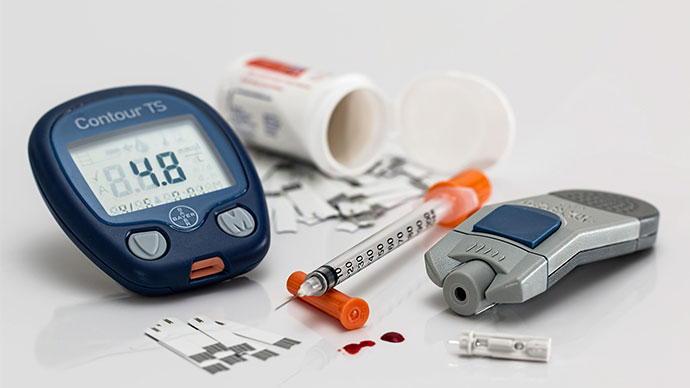Diabetes is one of the most talked-about diseases across the world but awareness on this is still low. It generally occurs due to failure or damage of the cells that produce insulin in the pancreas called Beta cells. It can be classified into 2 types: Type 1 (T1DM) and Type 2 (T2DM).As Stem Cell Therapy continues to turn out to be a ray of hope for most patients who are trying to find a cure for incurable diseases, Diabetes forms a part of these diseases.
How does Diabetes Develop?
Diabetes occurs when your blood glucose, also called blood sugar, is too high. Blood glucose is your main source of energy and comes from the food you eat. Insulin, a hormone made by the pancreas, helps glucose from food get into your cells to be used for energy. Sometimes your body doesn’t make enough—or any—insulin or doesn’t use insulin well. Glucose then stays in your blood and doesn’t reach your cells.
Explaining the Different types of Diabetes
Type 1 diabetes
If you have type 1 diabetes, your body does not make insulin. Your immune system attacks and destroys the cells in your pancreas that make insulin. Type 1 diabetes is usually diagnosed in children and young adults, although it can appear at any age. People with type 1 diabetes need to take insulin every day to stay alive.
Type 2 diabetes
If you have type 2 diabetes, your body does not make or use insulin well. You can develop type 2 diabetes at any age, even during childhood. However, this type of diabetes occurs most often in middle-aged and older people. Type 2 is the most common type of diabetes.
Gestational diabetes
Gestational diabetes develops in some women when they are pregnant. Most of the time, this type of diabetes goes away after the baby is born. However, if you’ve had gestational diabetes, you have a greater chance of developing type 2 diabetes later in life. Sometimes diabetes diagnosed during pregnancy is actually type 2 diabetes.
Stem Cells and Diabetes
Stem cells are part of the human body and have the unique ability of naturally finding and repairing the place of damage within. Over the past two decades, it has been made possible to treat T1DM by transplanting islet cells or even whole pancreas from cadaveric donors (allogenic transplantation). Transplants can enable the body to regain control of blood sugar levels so that insulin injections are no longer needed.
Islet transplantations are not very common, because whole pancreas transplants involve major surgery and carry significant risk. Transplants require the immune system to be suppressed so that the new “alien” organ is not rejected. Immuno-suppressant drugs leave the recipient vulnerable to infections and often have side-effects. One of the biggest problems faced by islet transplantation is the lack of donors.
This can be overcome by using patient’s own stem cells (autologous transplantation), bypassing all the complications, rejections and side-effects. Research has shown that stem cells present in the patient’s pancreas are able to make new Beta cells. Beta cell progenitors have been found in the pancreas of both rodents and humans; it may be possible to grow islet cells from patient’s existing islet cells. Alternately, mesenchymal stem cells (MSCs) treatment is also being explored. These can be sourced from the patient’s own adipose tissue (fat), umbilical cord, menstrual fluid, bone marrow and the like.
Stem Cells for Diabetes: Clinical Trials
Clinical trials inserting MSCs into Type 1 diabetes patients take advantage of two properties of these cells. Firstly, they have the regenerative potential to repair Beta cells and, secondly, they can modulate the immune system by inhibiting the responses that lead to the auto-immune attack on pancreatic Beta cells. Since these stem cells come from the patient’s own body, there is also no risk of rejection or side-effects. MSCs may be injected intravenously or within the pancreas itself. This approach promotes Beta cell function, thereby reducing or eliminating the requirement for exogenous insulin.
With extensive trials underway, Stem Cell Therapies will not only be able to effectively treat Diabetes, but illnesses such as Autism too, giving patients around the world something to look forward to.



 English
English